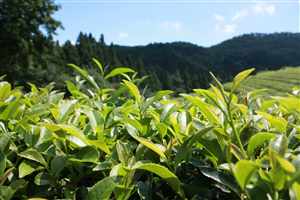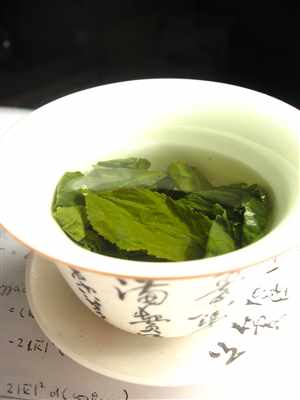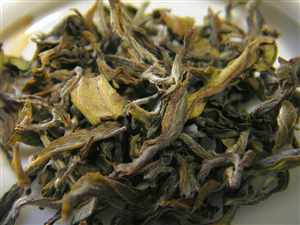Tea (Camellia sinensis,Thea sinensis)
Main Facts about Black Tea

The Tea plant is a small evergreen, 3 to 30 feet tall with smooth, leathery, dark green leaves. The small fragrant white flowers are single, with a boss of gold stamens. There are some 350 varieties of Camellia sinensis , and they vary considerably in form. In cultivation, it is pruned into a bushy shrub to allow easier harvesting of the leaves.
Native to Asia, the Tea plant is extensively cultivated in tropical and subtropical countries, including China, India, Sri Lanka, Indonesia, and Japan. Some Tea gardens in China have continuously produced this valuable beverage leaf for more than 1,000 years.
Tea has a remarkably long history of use as a beverage in China, Japan, and India, the largest tea-producing nation in the world. These cultures believe that drinking Tea optimizes health and ensures longevity. The plant’s leaves contain caffeine, a mild stimulant. Eastern religious practitioners once drank this herbal beverage to stay awake during long meditations.
Using Black Tea
Leaves picked from the Tea plant are subjected to various processing methods to produce green, black, white and oolong varieties of Tea. For instance, leaves are fermented and dried for black Tea, but steamed and dried for green Tea. Each type of Tea contains different levels of important compounds, known as polyphenols, which are primarily responsible for the plant’s medicinal properties. Green Tea contains the highest levels of polyphenols and is regarded as having the greatest therapeutic activity of all these Teas.

Further human trials have reported a protective effect of green Tea against sunburn when applied topically, and regular consumption of chewable green-tee tablets has been shown to reduce gum inflammation and plaque formation. Due to its caffeine content, green tea continues to be a popular aid for improving mental alertness and concentration, and it has also been investigated for its use as a potential weight-loss agent. New studies also suggest a potential role for green Tea in the treatment of diabetes as a result of a blood sugar-lowering effect in addition to its antioxidant properties.
A topical cream produced from green Tea and used for the treatment of genital and anal warts cause by human papilloma virus (HPV). It was approved by the FDA in 2006. This was the first approval of a whole botanical extract as a prescription botanical drug. Studied in clinical trials of nearly 400 adults, the product (Veregen ointment) proved effective at eliminating the warts.

Relieve sore feet and keep them smelling sweet by soaking them for 20 min in a bath of strong black Tea.
Mix Witch hazel with strong (cool) black Tea to make a stimulating scalp toner; massage in the liquid after shampooing. Wait a few minutes, then rinse with water. Follow up with a conditioner.
Use cool black Tea as a mild astringent skin toner; apply with a clean cotton ball. Soothe insect bites and cuts by applying a cool, used black Tea bag. To reduce inflammation from sunburn, hang 4-5 Tea bags from the faucet when filling your tub; soak in the warm water.
Cooking with Black Tea
Tea is second only to water as the world’s most popular beverage. The plant’s leaves are used to make four basic types of Tea: black, oolong, green, and white.

- Black Tea is fully oxidized (the chlorophyll breaks down and combines with oxygen in the air).
- Oolong Tea is partially oxidized.
- Green Tea is wilted but not oxidized.
- White Tea is neither wilted nor oxidized – it is made from the plant’s immature leaves and buds, which are steamed and dried immediately after harvesting.
Black and green Teas are the most commonly used varieties in cooking. Unfermented green Tea contributes a grassy, herbal, astringent flavor; fermented black Tea adds full-bodied dimension to soups and spice rubs.
To make Tea for cooking, brew 2 tsps of loose-leaf Tea per 1 cup of liquid (water, stock, or milk). Steep the Tea in below-boiling water for 20-30 min. Strain the mixture before using it in any recipe.
In the Asian countries Tea leaves are traditionally used to flavor, tenderize, and color food. Loose-leaf Tea may be simmered with rice or stuffed into fish or chicken before roasting. Tea leaves can be finely ground in a coffee or spice mill and combined with other herbs to make a dry rub for meat and poultry, or they can be added to the dry ingredients for sweet shortbread or Tea cakes. Tea oil, which is made from cold-pressed Tea seeds, is a sweet, herbaceous addition to vinaigrettes that can be drizzled over salads, steamed vegetables, or delicate seafood.
How to grow Black Tea
The plant is frost-hardy and requires full sun to partial shade, and a rich, moist, but well-drained soil. The Tea plant grows best in a warm, humid climate that receives ample rainfall. The soil, altitude, and climate in which the Tea plant grows can affect the flavor of the leaves. It is cultivated primarily in China, Japan, India, Sri Lanka, and Indonesia.| St. John's wort |
Tea tree
|